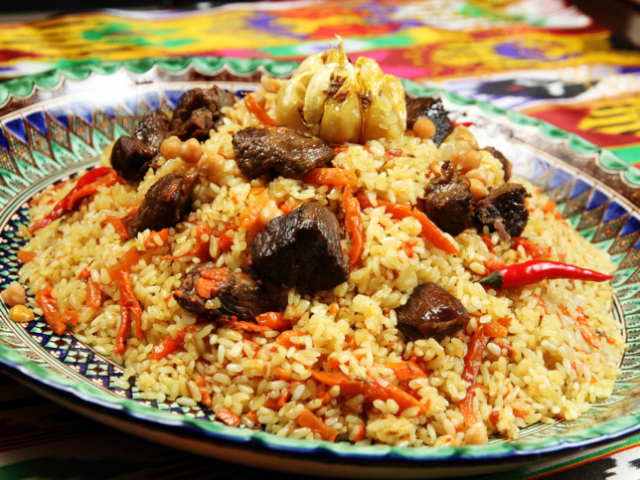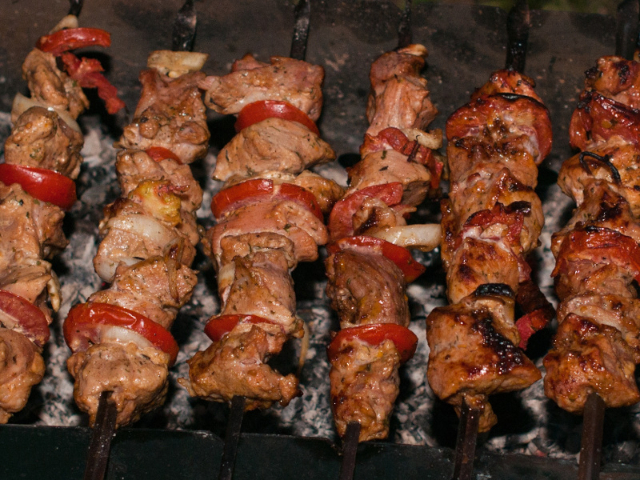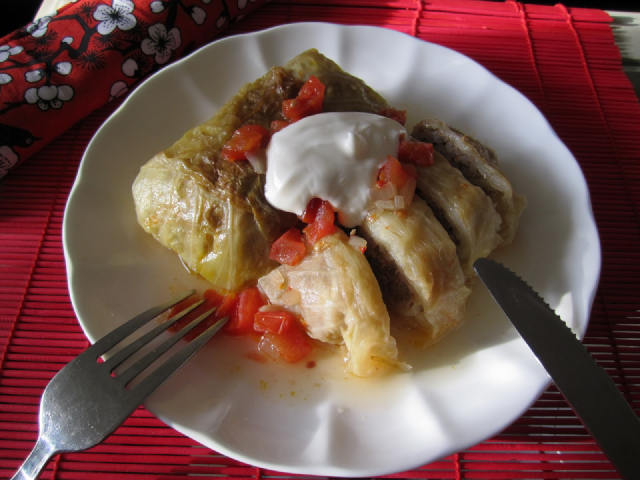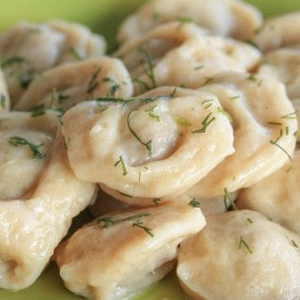When you first look at Turkmenistan on the map, you see a lot of empty space: no towns, no roads, no evidence of agriculture. But when you look closer, you find a nation of 6 million located in a few key cities – and a capital totally composed of administrative and ceremonial buildings…
 Turkmen Lagman: Seared Lamb, simmered veggies, spices and Chinese-style pulled noodles…
Turkmen Lagman: Seared Lamb, simmered veggies, spices and Chinese-style pulled noodles…
The earliest civilization in the region was the Turkmen tribal culture, which moved into the area from Siberia in the 8th century. The country was a key link on the Silk Road, which connected the Orient with Europe.
The Turkmen capital, Ashgabat, was constructed in its present form only during the past few decades by the country’s Russian-style dictatorial government. They got the money to create an ultra-modern showplace of over 500 structures at the city centre from developing their immense oil and gas reserves. But it’s not all marble facades and pomp: most of the country has electricity and clean water as a result of its mineral wealth.
The native culture – cut off from the rest of the world for centuries, until annexation by the Soviet Union in the early 1980s – remains strong, and is expressed boldly in classic Central Asian cuisine.
Key ingredients in Turkmen cooking include mutton and lamb, chicken, and occasionally fish. The staple veggies are onions, tomatoes, and squashes. Rice and noodles are by far the most popular starches. And melons (more than 400 distinct varieties!) are a source of national pride. Turkmenistan was once the primary exporter of melons to the Soviet Union. They even have a national Melon Day celebration!
Traditional dishes include stew and soups, grilled meats, mayonnaise-based salads, hand pies and dumplings, cabbage rolls and a distant relative to the Pizza called Ishlykly.
On our menu today
Plov: Pilaf. Different versions are consumed all over Asia. The Turkmen variant consists mainly of mutton, carrots and onions fried in a large cast iron pot, then simmered in stock or water. It’s easy to make, and cheap, and the ingredients are available everywhere in the country. No surprise that Plov is the national dish!
Chegdermeh: A mixture of rice, meat, tomatoes and onions, similar to Plov, but a signature original of Turkmen cuisine. So good, it’s enjoyed across Central Asia.

Small pieces of meat are first fried then mixed with shredded roasted onions, tomatoes and occasionally tomato paste. Then mixture is brought to the boil and rice is added. The Chegdermeh is ready to eat when the rice is ready.
Lagman: Popular across Central Asia, this soup is served with Chinese-style pulled noodles. Meat (beef or lamb) is seared, then simmered with carrots, onions, tomatoes, sweet bell peppers, garlic, cumin and/or coriander, salt and pepper. Some westernized recipes call for potatoes.
Shashlyk: A Russian contribution to the Turkmen cookbook. Essentially, skewered meats grilled over a charcoal fire. The meat is usually marinated first in a mixture of oil and vinegar.

It’s often alternated on the skewers with pieces of onion, tomato or other vegetables. Usually served with rice.
Plemni: Dumpling wrappers are made with a rich mixture of flour, buttermilk, sour cream, eggs, salt and water (see photo, top of page). They’re stuffed with a simple (almost universal in Turkmen cooking) mixture of meat, onions and garlic. “Sour Cream?” you ask. As ensign Chekov often said on Star Trek TOS: “Eez Russian inwention!”
Golubtsy: The Turkmen iteration of cabbage rolls. Eez also Russian inwention. Rice, sautéed onions, lean ground meat, tomatoes, prunes and sour cream are mixed together for the filling. A whole head of white cabbage is simmered for as long as it takes for the leaves to soften and become pliable.

The rolls are then shallow-fried in a mixture of butter and oil for 3 -5 minutes until slightly browned. A sauce is made from sautéed tomatoes, minced onions, salt and pepper stirred into a blend of sour cream and flour (to thicken). The sauce is poured over the rolls in a casserole dish and they’re baked uncovered for about 45 minutes.
Manti: Dumplings stuffed with a spicy lamb or mutton mixture. Turkmen cuisine doesn’t feature a lot of spices, but this is one dish where they shine.
Many similarities…
You’ve no doubt noticed the similarities between several of the dishes enumerated above. They don’t exactly have an overflowing variety of ingredients available in Turkmenistan. But they do a lot with what they have! Tomorrow, breads and baked goods – some familiar and some not so much..
~ Maggie J.

